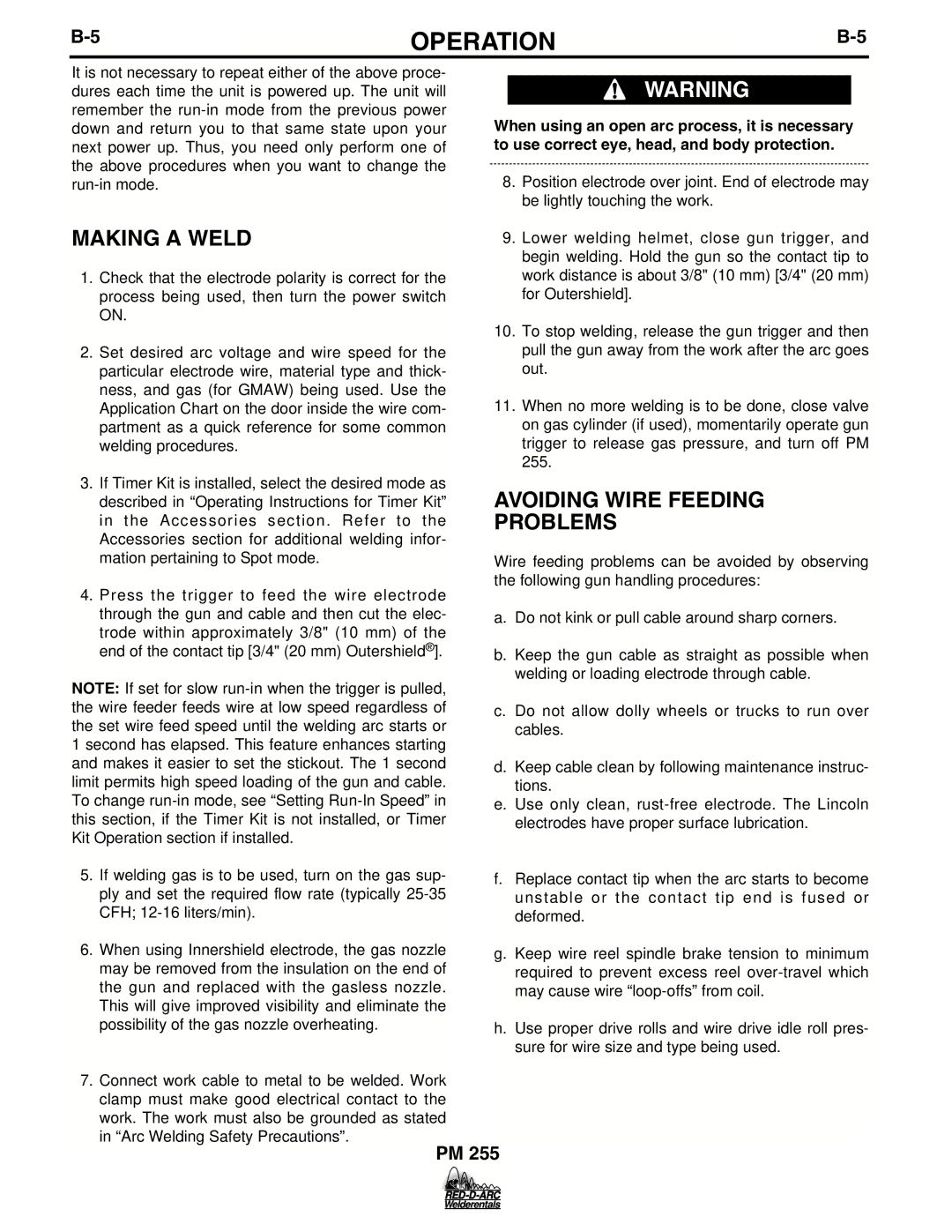
| OPERATION |
| ||
|
|
|
|
|
It is not necessary to repeat either of the above proce- dures each time the unit is powered up. The unit will remember the
MAKING A WELD
1.Check that the electrode polarity is correct for the process being used, then turn the power switch ON.
2.Set desired arc voltage and wire speed for the particular electrode wire, material type and thick- ness, and gas (for GMAW) being used. Use the Application Chart on the door inside the wire com- partment as a quick reference for some common welding procedures.
3.If Timer Kit is installed, select the desired mode as described in “Operating Instructions for Timer Kit” in the Accessories section. Refer to the Accessories section for additional welding infor- mation pertaining to Spot mode.
4.Press the trigger to feed the wire electrode through the gun and cable and then cut the elec- trode within approximately 3/8" (10 mm) of the end of the contact tip [3/4" (20 mm) Outershield®].
NOTE: If set for slow
5.If welding gas is to be used, turn on the gas sup- ply and set the required flow rate (typically
6.When using Innershield electrode, the gas nozzle may be removed from the insulation on the end of the gun and replaced with the gasless nozzle. This will give improved visibility and eliminate the possibility of the gas nozzle overheating.
7.Connect work cable to metal to be welded. Work clamp must make good electrical contact to the work. The work must also be grounded as stated in “Arc Welding Safety Precautions”.
![]() WARNING
WARNING
When using an open arc process, it is necessary to use correct eye, head, and body protection.
8.Position electrode over joint. End of electrode may be lightly touching the work.
9.Lower welding helmet, close gun trigger, and begin welding. Hold the gun so the contact tip to work distance is about 3/8" (10 mm) [3/4" (20 mm) for Outershield].
10.To stop welding, release the gun trigger and then pull the gun away from the work after the arc goes out.
11.When no more welding is to be done, close valve on gas cylinder (if used), momentarily operate gun trigger to release gas pressure, and turn off PM 255.
AVOIDING WIRE FEEDING
PROBLEMS
Wire feeding problems can be avoided by observing the following gun handling procedures:
a.Do not kink or pull cable around sharp corners.
b.Keep the gun cable as straight as possible when welding or loading electrode through cable.
c.Do not allow dolly wheels or trucks to run over cables.
d.Keep cable clean by following maintenance instruc- tions.
e.Use only clean,
f.Replace contact tip when the arc starts to become unstable or the contact tip end is fused or deformed.
g.Keep wire reel spindle brake tension to minimum required to prevent excess reel
h.Use proper drive rolls and wire drive idle roll pres- sure for wire size and type being used.
PM 255
